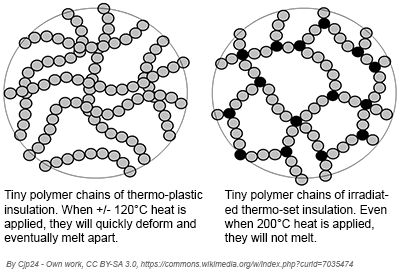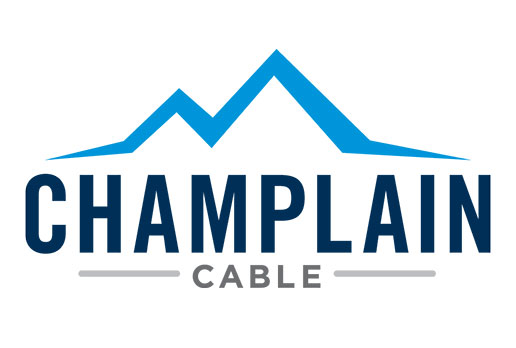
UL/CSA FEP Wire Alternatives
ALTERNATIVES TO 200°C UL/CSA FLUORINATED ETHYLENE PROPYLENE (FEP) WIRES
FEP-insulated lead wire has been used in many markets and applications for well over 50 years. It is a very desirable material for insulating lead wire due to its outstanding attributes. It’s strong, can be used in very thin walls, is highly fluid- and flame-resistant, and is very thermally robust with many UL/CSA products commercially available at -65°C to +200°C.
Limitations of FEP
As with any wire insulation, FEP has some limitations as well. It does not print or pot very well; it is a thermoplastic, which means it can melt at elevated temperatures and also can deform or cold-flow when under stress at low temperatures; it is expensive; and there are occasional supply disruptions which can increase pricing and reduce availability.
When weighing the pros and cons, FEP is an all-around excellent wire insulation. But all this performance comes at a cost, and what if your application doesn’t need such a wide performance range? What other options are there that offer similar size and functionality in a UL/CSA recognized wire?
Consider Irradiation Cross-Linked Wires
 While the irradiation process is complex, describing it is easy. Irradiation is simply focusing very high energy (via electrons) on the wire insulation to create a molecular change in the insulation material. The change causes polymer chains of insulation to link together permanently so they can never again release. When the polymer chains of the insulation are linked together like this, it improves many performance attributes at minimal cost.
While the irradiation process is complex, describing it is easy. Irradiation is simply focusing very high energy (via electrons) on the wire insulation to create a molecular change in the insulation material. The change causes polymer chains of insulation to link together permanently so they can never again release. When the polymer chains of the insulation are linked together like this, it improves many performance attributes at minimal cost.
Irradiated wire insulations are an excellent blend of performance and price. The irradiation process takes a generic insulation and modifies the molecules in a manner that links them together and sets them in place. This is where the terms “cross-linking” and “thermoset” come from. This process improves many performance attributes that are useful in wires such as dielectric strength, high- and low-temperature performance, cut-through resistance, crush resistance, fluid resistance, abrasion resistance, useful life, and other attributes.
FEP Comparison at a Glance
Below is a comparison of common wire characteristics of 200°C FEP and also two thermal steps lower:
| Attribute | 200°C FEP* | Irradiated 180°C Fluoroelastomer* | Irradiated 150°C Polyolefin* |
|---|---|---|---|
| Low Temp | -65°C | -40°C | -55°C |
| High Temp | +200°C | +180°C | +150°C |
| Short-Term, high-Temp Resistance (6 hrs) | +225°C | +250°C | +240°C |
| Fluid Resistance | Superior | Superior | Excellent / Good |
| Insulation Thickness (UL, 600V, 18 awg) | 0.020” | 0.016” | 0.030” |
| Final OD (18 awg) | 0.087” | 0.079” | 0.106” |
| Flame Resistance | VW-1 | VW-1 | VW-1 |
| Melt at Elevated Temps | Yes | No | No |
| Cold-Flow / Shrink-Back | Possible | No / Limited | No / Limited |
| Print Adhesion / Legibility | Poor | Excellent | Excellent |
| Price | Higher | Lower (est 10%) | Lower (est 20%) |
*Generic comparisons. Consult specific manufacturer data sheets for their particular product attributes.
Based on the commercially available options, engineers and purchasing managers should review their UL/CSA FEP wire needs to determine if an alternative UL/CSA irradiated, cross-linked product might offer a better long-term cost and supply solution.
IEWC offers a full line of irradiated 180°C fluoroelastomer cable.

This Resource Compliments of Champlain Cable
Champlain Cable is America’s premier innovator, designer and manufacturer of high performance wire and cable with a 60-year history of providing solutions to the toughest problems in the world’s most extreme environments. Champlain excels at developing customized products, utilizing our cross-linked irradiation technology, that meet your power, signal and data transmission needs — no matter how demanding the challenge — while exceeding standards for quality, durability and safety.


